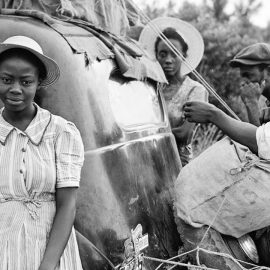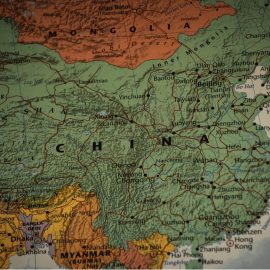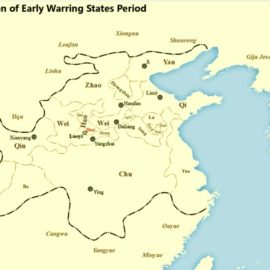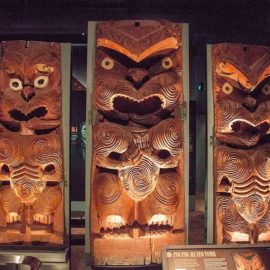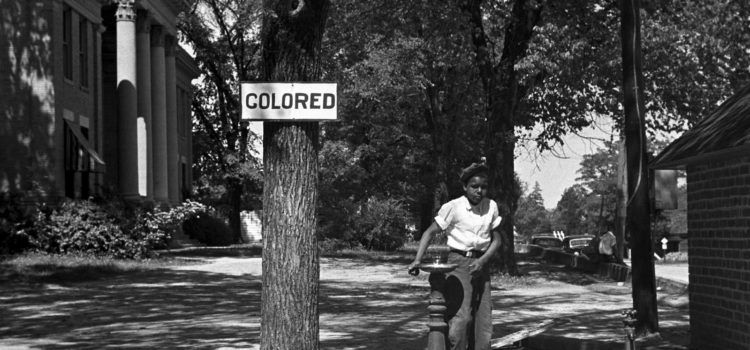

This article gives you a glimpse of what you can learn with Shortform. Shortform has the world’s best guides to 1000+ nonfiction books, plus other resources to help you accelerate your learning.
Want to learn faster and get smarter? Sign up for a free trial here .
What is the meaning of Jim Crow? How is it affiliated with racial segregation in America?
Jim Crow means a collection of segregation laws that were active around the post-Civil War era (the 1860s-70s) until 1968. Even after the efforts to abolish slavery and give Black people more power after the Civil War, the Jim Crow laws were formed to prevent Black people from having equal rights. Jim Crow laws don’t exist today, but their fundamental meaning is still a part of the systematic racism seen in contemporary America.
Continue reading to learn more about the meaning of Jim Crow and the history of the discriminatory laws.
History of Jim Crow Laws
Jim Crow laws denied Black people the right to vote, to have good-paying jobs, to get an education, and more. But since the Reconstruction era worked so hard to give Black people rights, how did it fall apart? The simple answer is that white people still had massive control over governments, and were scared of the power Black people were gaining during the Reconstruction era.
Let’s break down the history of Jim Crow’s meaning, its name origin, the actual laws themselves, and the path to deconstructing the Jim Crow laws.
Who Was Jim Crow?
The name “Jim Crow” actually originates from a white entertainer named Thomas Dartmouth Rice, who performed a song-and-dance act throughout the 1830s and ‘40s. The act involved wearing blackface and putting on an exaggerated, offensive imitation of African-American Vernacular English to form a character named Jim Crow, meaning the inherently racist laws were named after an inherently racist character.
Ferris State University (where the Jim Crow Museum is located) gives further information on the origins of Rice’s character and success. Rice didn’t fabricate the concept of blackface, but he was by far the most popular entertainer who used it. Rice toured all across America and England at minstrel shows, which were popular musical stage shows where performers would darken their faces and play roles of Black people.
What Are Jim Crow Laws?
It’s not exactly clear how the name “Jim Crow” became associated with the laws that mandated racial segregation from the 1860s to 1968, but the name certainly stuck. Civil rights litigator Michelle Alexander in her book The New Jim Crow: Mass Incarceration in the Age of Colorblindness gives a basic timeline of the origins and meaning of Jim Crow laws, and why they were instituted after the Reconstruction era in America:
1) White elites committed to racial hierarchy are worried about a threat to the social order.
- The Civil War, Emancipation Proclamation, and 13th Amendment formally end slavery. The Civil Rights Act of 1866 gives African Americans full citizenship.
- Freed Black people provoke fears of danger, and amalgamation with them was considered inferior and vile.
- Poor whites are frightened of losing their social status according to skin color.
- The Populist Party accuses the privileged classes of conspiring to keep poor whites and Blacks locked into subjugation. “You are made to hate each other” for “financial despotism that enslaves you both.” Racial integration and class-based unity are a centerpiece. The Populists achieve political success.
2) The white elites devise a new method of enforcing racialized social control.
- Mainly this: Segregation laws (meaning Jim Crow laws) are proposed to split white people and Black people. Segregation even leads poor whites to retain a sense of superiority over Black people, making alliances unlikely.
- A system of veiled slavery is enacted. 1) States enact convict laws allowing for hiring out-of-county prisoners for little pay. 2) Very tough vagrancy laws (like requiring jobs for all freed Black people) create lots of convicts. Treatment is possibly worse than slavery, given that employers are merely temporary, unlike plantation owners. This fades out gradually in the early 20th century.
- States impose poll taxes, literacy tests, and other barriers to prevent Black voting.
- The Ku Klux Klan enacts terrorist campaigns against Reconstruction governments and leaders.
3) They collapse resistance across the political spectrum, largely by appealing to the vulnerability of lower-class whites.
- Conservatives implement campaigns of white supremacy, directing poor white hatred at Black people instead of white elites. This shields elites from a mass uprising from the poor.
- The agricultural depression promotes “permission to hate” and scapegoats Black people.
4) The system becomes institutionalized and pervasive, as stakeholders pursue their own incentives and rationalize their behavior.
- Politicians compete with each other by proposing more stringent and oppressive legislation (like prohibiting Black people and white people from playing chess).
To summarize, white people were threatened by the power Black people were gaining during the Reconstruction era, even if it wasn’t close to the privileges white people had. Many laws were passed to ensure that white people would be superior to Black people by segregating schools, restaurants, restrooms, etc.
Segregated Housing
Jennifer Eberhardt’s book Biased says that racial bias impacts very personal decisions—like where to live. Anti-Black racial bias led to formal housing segregation laws, and although those laws no longer exist, they laid the groundwork for the de facto housing segregation we see today.
In the aftermath of the Civil War, the Reconstruction era held enormous promise for newly-freed Black Southerners who hoped that the end of slavery would mean the beginning of legal and social equality. However, many white people in the South were determined to keep the Confederate’s racist legacy alive—they quickly put an end to the promise of Reconstruction with a slate of Jim Crow laws that meant widespread white terrorism.
By the early 20th century, Black Southerners were fleeing that terror to what historians call the Great Migration. They headed for northern cities like Chicago and Detroit, where jobs were plentiful as industries fought to keep up with the demands of World War I. As a result, the racial makeup of northern cities changed drastically in just a few decades.
For white people in northern cities, this was a deeply alarming shift. To preserve the norm of total racial segregation in residential spaces, private housing developers began instituting official covenants that forbade white homeowners from renting or selling their homes to Black people. If a white homeowner ignored this covenant, the new Black occupants could be legally evicted based on their race because racial covenants were “voluntary private contracts.” These covenants were so widespread that by the time the Supreme Court banned them in 1948, Black residents were banned from 80% of the neighborhoods in big cities like Los Angeles.
For over 30 years, the Jim Crow laws ensured that Black homeowners and renters were crowded into tiny neighborhoods, completely segregated from their white neighbors. Those laws and racial covenants are the origin of the segregated neighborhoods and ethnic ghettos that still exist today. During this time, there was no legal recourse for people facing housing discrimination—if anything, government policies were even more discriminatory. State and local government policies varied, but many places had zoning regulations that specifically barred all non-white people from certain areas.
Landlords Exploiting African-Americans
Richard Rothstein says in his book The Color of Law that racial residential segregation that stemmed from Jim Crow meant depressed incomes for Black people.
One way segregation resulted in depressed incomes was through price gouging. Because Blacks were confined to particular neighborhoods, landlords in those neighborhoods were able to exploit their tenants. A common strategy was to subdivide single-family apartments into five or even six units, and then charge each tenant an excessively high rent. With nowhere else to go, tenants were forced to devote large proportions of their income to rent.
There were many examples of landlords exploiting Black people with depressed incomes in Chicago. In 1946, a landlord divided a two-story building with a 540-square-foot footprint into six cubicles per floor. Each cubicle was rented to a single family at inflated prices, resulting in a total rent for the property that rivaled a luxury apartment on Chicago’s tony “Gold Coast.” At another property, after a fire killed ten Black tenants, an inquest revealed that a white tenant paying $15 a month had been evicted so that the landlord could charge a Black family $60 a month.
Jim Crow in World War II
During World War II, Jim Crow laws became less influential when it came to segregating Black people. While many white people left to fight in the war, industrial jobs that were crucial to the American war effort opened up for Black people. Minorities began to learn new skills and take high-ranking jobs, but segregation still prevented them from being seen as equal to whites.
Labor Union Discrimination
Unions continued to be a vehicle for labor-market discrimination during World War II. With the co-option of heavy industry for the war effort came management–union partnerships that, more often than not, were explicitly discriminatory.
Rothstein uses the example of powerful unions that discriminated against Black people in The Color of Law. In the San Francisco Bay Area, powerful unions like the Marine Laborers Union (30,000 members) and the Steamfitters Union (17,000 members) negotiated agreements with companies so that only union-referred workers could be hired. These unions then refused to refer Black people to more jobs.
Other unions, when forced by labor demand to admit Black people, simply ensured that their Black members didn’t enjoy the same benefits as their white members. The Boilermakers union, for example, established auxiliary chapters for African Americans. Members of the auxiliaries paid full dues but couldn’t file grievances or vote in union elections. They were also prohibited from foreman positions if they would be supervising whites.
WWII’s Effect on Jim Crow Laws
During World War II, the gradual dismantling of the Jim Crow system of racial segregation began, as the demands of the war economy brought Black women into jobs and industries from which they had previously been excluded. This was especially true of the aeronautics and defense industry, which was crucial to the American war effort.
Margot Lee Shetterly’s book Hidden Figures tells the story of three Black female mathematicians who worked as number-crunchers at NACA and NASA during World War II. One of NASA’s facilities, the Langley Memorial Aeronautical Laboratory (now known as the Langley Research Center) opened doors for new opportunities for women of color during the desperate times of WWII.
Facilities like Langley began to hire qualified women in large numbers to work as mathematicians and number-crunchers. Aeronautics was an intensely quantitative field: designing and testing combat planes produced a deluge of numerical data that needed to be processed and analyzed. And that meant hiring an army of number-crunchers or previously known as “computers.”
Under pressure from Black civil rights leaders, the Roosevelt Administration took steps to desegregate the industry and open up defense jobs to Black female applicants as well. This enabled the first generation of Black female professionals to get in the door at Langley. The opportunity for a Black person to work as a computer in an aeronautical laboratory (and not as a janitor or cafeteria worker) was something altogether new and extraordinary.
Segregation in High-Ranking Jobs
Despite the opportunity, these new arrivals like Dorothy were still living at the height of the Jim Crow era, meaning they still had to face the prejudice of living and working in a segregated city of the American South. Black people had to use separate bathrooms, separate drinking fountains, separate entrances on buses, send their children to separate schools, and live in separate neighborhoods—or face severe repercussions. Indeed, segregation was powerfully entrenched in the nation’s historical experience and was an all-encompassing feature of life in Virginia.
The prejudice even followed these women into the laboratory at Langley. A separate area of the facility, known as West Area Computing, was reserved for the new Black female computers. Langley was generally a place where colleagues worked closely with one another. Because of the color of their skin, however, the West Area Computers were largely excluded from this collegial atmosphere. This was symbolized most hurtfully by the sign on the table where they sat at the back of the cafeteria that read, “COLORED COMPUTERS.” In an act of defiance, the women of West Computing began tearing the sign down each day they saw it, a first shot across the bow for equality and dignity.
Facing this climate of discrimination, the first generation of West Computers established their own culturally vibrant and cohesive communities throughout Hampton Roads. Such communities enabled mobile young Black families who’d moved to Virginia to keep their morale high and served to welcome and acclimate new waves of Black migrants to the region.
End of Jim Crow Laws
The civil rights movement began to grow during the post-WWII era, which ultimately turned over Jim Crow laws. Surprisingly though, Hidden Figures claims that the Cold War had a hand in tearing down Jim Crow laws.
The Cold War marked a turning point in the struggle for Black civil rights, contributing to the eventual breakdown of Jim Crow. As the United States sought international allies in its fight against worldwide Soviet Communism, American policymakers began to realize that segregation at home had become a significant liability, one that made America’s self-proclaimed leadership of “the free world” look hypocritical and handed a significant propaganda coup to the Soviet Union. The federal government began putting more resources toward desegregation and slowly started to side with the civil rights protesters over the die-hard segregationists.
The final fight against Jim Crow laws was between the years 1964 and 1968 when President Lyndon B. Johnson signed the Civil Rights Act that ended the segregation upon which the Jim Crow laws were built on. Furthermore, the Voting Rights Act of 1965 allowed minorities to vote.
It took three more years for discrimination in renting and selling homes to be legally outlawed, thanks to the Fair Housing Act of 1968.
Modern Segregation
While the dismantling of Jim Crow laws meant they were illegal, it didn’t stop the racism that still exists today. Systematic racism is still a predominant issue in politics, healthcare, housing, schools, and much more. In addition, the War on Drugs campaign has exposed discrimination in the criminal justice system, which Michelle Alexander writes about in The New Jim Crow.
The War on Drugs and “New Jim Crow”
Alexander says that the U.S. criminal justice system uses the War on Drugs as a way to sneakily enforce discrimination.
Looking at statistics, Black people make up 13% of the US population, but 40% of the US incarcerated population. A third of Black men will have served time in prison, based on 2001 rates.
Since 1980, the growth in the number of arrests for Black Americans has been concentrated in drug crimes— arrests for property and violent crimes have decreased.
Drug offenses make up 46% of inmates in federal prisons and 16% in state prisons.
- Alexander argues these underestimate the impact of drug laws—drug offenses receive half the sentence length as violent crimes, so they flow out of prison more quickly. Drug crimes account for 31% of total federal and state prison admissions, but these have grown over time.
One might think racial differences in drug prison admissions are due to differences in crime rates, but within drug crime, this isn’t true. Black people are no more likely than white people to sell and consume drugs (albeit according to survey data). Despite this, Black people are searched and arrested at higher rates and receive more severe punishment for the same crime. Alexander sees this racist phenomenon as the “New Jim Crow,” meaning a reinvention of the original Jim Crow laws is at large in the modern-day.
Here is Alexander’s breakdown of how the U.S. criminal justice system is enforcing the New Jim Crow:
- The people within the system use the War on Drugs to arrest large numbers of Black men. They promote this through 1) strong financial incentives to stakeholders and 2) legal protection of discretion in law enforcement and prosecution.
- Generally, as long as racial discrimination is not explicitly stated, actions biased by race are allowable.
- Legal protections: race is allowed to be a factor in stopping vehicles as long as it’s not the sole factor; probable cause is sufficient to justify stop and searches, regardless of the intent of the officer; lawyers can strike jurors on arbitrary peremptory challenges as long as it’s not explicitly racist.
- In essence, Black men are made criminals at higher rates than white men, despite not having significantly higher rates of drug crime.
- These same people hand down disproportionately harsh sentences to Black men and limit effective legal representation for them.
- As one example, before 2010, 5g of crack cocaine (associated with Black people) and 500g of powder cocaine (associated with white people) earned the same 5-year minimum sentence – a literal 1:100 ratio. Analysis of risk of arrest.
- Lastly, they impose sanctions on ex-criminals outside of prison, such as removing access to public housing, welfare, job opportunities, and the right to vote.
- This prevents reintegration, encourages recidivism, and may actively promote crime.
As a result, Black people are pushed into the system and kept within it. They are arrested more frequently, handed heavy sentences, then discriminated against when they leave prison.
In turn, their children are heavily disadvantaged as a result and similarly forced into the system; and so the cycle perpetuates.
Insidiously, because the current system does not have an explicit racial bias, it’s assumed to be colorblind. Exceptional Black achievers like President Obama and Oprah imply that a racial caste no longer exists. This causes a consensus that criminals choose a life of crime and are not being systematically discriminated against. Furthermore, there has been historical Black support for the war on drugs.
Alexander argues that ending the New Jim Crow requires broad public consensus that the War on Drugs has produced a racial caste and must be dismantled entirely. She doesn’t offer how to technically achieve it, but she does argue that solitary battles like affirmative action will not win the war.
Systematic Racism
Systemic racism is also called “institutional racism” or “structural racism.” If something is systemic, it’s built into the underlying structure of a system. It’s an integral part of how the system operates. We can visualize each instance of racist behavior as a thread in a vast fabric—so vast that we’re completely caught up in it and can’t see its boundaries or overall shape. Similarly, we’re surrounded by racist messaging, but much of this operates unconsciously.
Though it may seem controversial, Ijeoma Oluo in her book So You Want to Talk About Race characterizes this system as a White Supremacist system. Why?
In a White Supremacist system, whiteness is both (1) the default and (2) the superior position. The system was built for the benefit of white people and at the expense of people of color. This dynamic is still playing out in both obvious and subtle ways. Here’s how it works.
1) Whiteness as the default. This is where whiteness serves as the reference point for “normal.” The White Supremacist system normalizes its perspective as the default. This makes anyone who doesn’t match the default invisible.
2) Whiteness as holding a superior position. Superior and inferior are always relative. If one person or group has a superior position, by definition there has to be another person or group that’s beneath them. And, as Oluo writes, this is the seduction of White Supremacy—it whispers: “You will get more because they exist to get less.” Wherever there’s a finite amount of power or resources, the social function of people of color in a White Supremacist system is to get a relatively smaller piece of the pie. Even if they don’t realize this consciously, people may feel that this is the natural order of things.
Oluo suggests that this is why the election of Barack Obama increased, rather than decreased, expressions of White Supremacy. Obama’s election to the most powerful office in the country disrupted this unconscious assumption. If a Black person, whose entire purpose is to be seen as “less than,” can assume the presidency, this feels fundamentally wrong to someone who’s been raised on a diet of White Supremacist beliefs—often in ways in which they can’t put into words.
Obama felt like a threat, and it’s because he was. But he wasn’t a threat to the country; he was a threat to the very structure of White Supremacist beliefs. After Obama was elected, many people were left feeling alienated from a country that they thought they understood. This alienation became the foundation of political movements that are still in force today.
Does Jim Crow Still Live On?
Jim Crow laws may seem like a thing of the past, but the message of discrimination and racism still holds true in many people’s minds today. The matter of racism isn’t something that can be changed overnight with the abolition of certain laws—it’s a matter of changing people’s core beliefs that can be extremely difficult to achieve. That being said, the meaning of Jim Crow laws is still prominent in important functions. Some governments and places of businesses are built on the foundation of institutional racism, creating a rendition of Jim Crow laws that is very hidden, but also very powerful.

Want to fast-track your learning? With Shortform, you’ll gain insights you won't find anywhere else .
Here's what you’ll get when you sign up for Shortform :
- Complicated ideas explained in simple and concise ways
- Smart analysis that connects what you’re reading to other key concepts
- Writing with zero fluff because we know how important your time is

